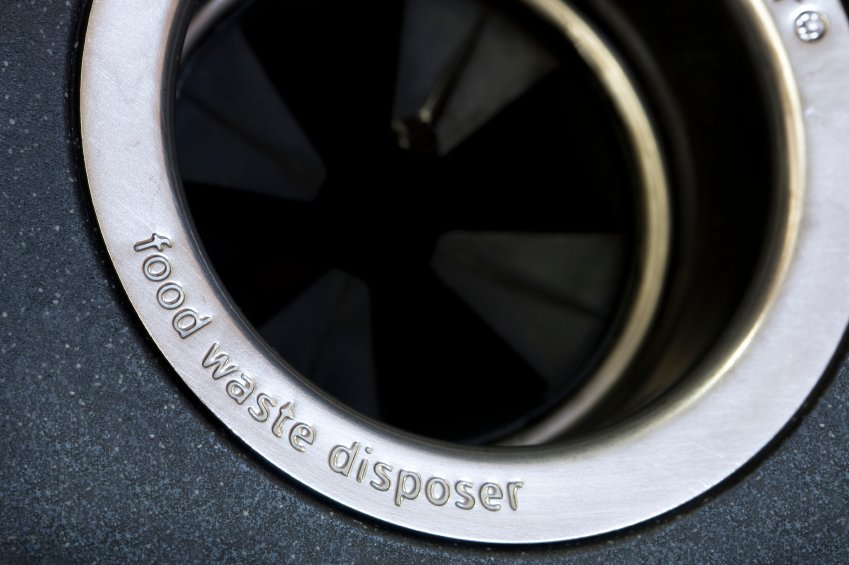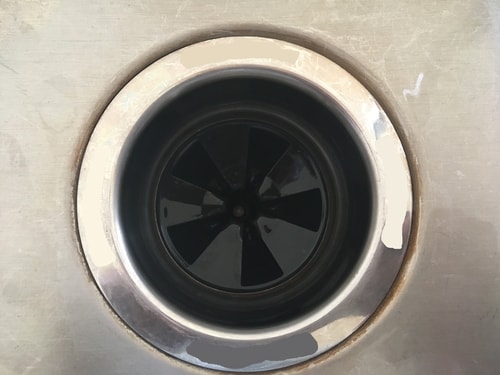How to Pick a New Garbage Disposal
Motor Size
– The smaller the motor size, the fewer and softer the foods need to be. For example, a one-third or one-half horsepower (HP) motor is perfect for a single homeowner occasionally grinding soft vegetables. A three-fourths or 1 HP motor, on the other hand, is much more suited to a large family that often eats at home and will provide smoother operation, finer pulverization and less jams — which equals less stress on your waste water system.
Grinding Chamber Size And Material
– Chambers in disposals with more HP will be larger, since their motors can handle more food. And chambers and blades made of stainless steel will last longer, be more efficient, are the easiest to clean and won’t rust.
Extra Features
– If course, a garbage disposal is going to make noise. Better quality (and more expensive) units, however, tend to have better insulated grinding chambers, so there’s a marked difference in the noise level. Similarly, some models offer additional features, such as sound baffles (to lower the decibel level of the unit), anti-splash baffles (to keep your sink cleaner) and corrosion protection shields.
Bonus Tip: If your home has a septic system, consider buying a garbage disposal with an enzyme reservoir, to help break down the food scraps.
And since it’s on your mind, did you know most homeowners insurance doesn’t cover broken garbage disposals? Just another reason to help protect your budget with a home warranty from American Home Shield.

How to Select a Garbage Disposal
To many of us, the garbage disposal is one of the best kitchen appliances. It not only saves you from having to scrape off every bit of food from each and every dish, but it also lets you do the dishes without worrying about small pieces of food clogging your sink drain.
Garbage disposals are pretty simple devices so you don’t have to spend a lot of time narrowing down what you want. You can quickly select the feed type, motor size, and a few other features that fit your use and your budget. You also don’t have to spend a lot to get solid performance, but it’s a good idea to buy a quality product ad to keep the disposal clean. Better disposers are more effective and last longer than cheaper models, which means you won’t have the expense and effort of replacing it as soon.
Components of Design
Invented in 1927 by John Hammes, the garbage disposal hasn’t changed much over the years. A classic version is little more than a plastic housing containing a motor connected to a metal grinding plate with two “teeth” (called impellers) that help break down the food waste. The plate is surrounded by a perforated metal ring called the grinding ring. As the waste is ground up, water flushes the particles through holes in the grinding ring, out through the discharge opening of the housing, and into the drain pipe. The impellers help the grinding process, but they aren’t sharp and they don’t cut up food as a blender does; rather, they and the spinning plate force the food against the grinding ring, which is stationary and has a textured surface that breaks down the material.
Feed Type
Disposals come in two basic types: continuous feed and batch feed. Continuous feed disposals are the most common and generally the easiest to use. They are the open-mouth disposals that turn on and off with a wall switch. Batch feed disposals require you to fit a stopper lid into the mouth of the disposal to activate the unit. This makes it impossible to turn on the disposal while your hand is fishing down inside the unit. It also helps prevent accidental mishaps like turning on the disposal just as a fork is slipping into its mouth. Batch feed disposals can be more expensive than continuous feed and generally are less commonly available.
Tips for Choosing a Garbage Disposal
Regulations
The first thing to determine is whether local regulations allow you to actually have a garbage disposal. If you’re simply replacing an old model, this is unimportant. However, if you’re putting in a brand new unit where you haven’t had a garbage disposal before, remember to check beforehand. Not all areas allow for the installation of garbage disposals because of the increased strain they place on sewer lines.
Plumbing
Will your plumbing handle a garbage disposal? Not all existing plumbing will so take the time to check first. It’s also important to check your fixtures to discover what types of garbage disposal will be compatible with your current plumbing and sewer system.
Also, check to see if there’s an electrical outlet under the sink that can plug into the garbage disposal. Without it, you’ll need to wire it into an existing circuit and also wire in a switch.
Motor Size
Many small garbage disposals come with a motor that’s just 1/3 horsepower. While that may be fine if you’re a single person in an apartment, you need something more powerful for a family home where the garbage disposal will be used more. You should ideally look for a unit that has a 1/2 horsepower motor. With a big house and plenty of people, you might even want a 1 horsepower motor on your garbage disposal.
This will be able to handle everything without straining so you’ll be far less likely to burn out the motor quickly.
Stainless Steel
Look for a garbage disposal with stainless steel blades. These are harder and sharper and will not only last longer, but will grind up the food more finely so you won’t have to deal with clogs in the pipes. Cheaper units will use far less stainless steel in their construction and are likely to wear out sooner. Bear this in mind as you check out units.
Dishwasher Attachment
If you have a dishwasher, you need a garbage disposal with a dishwasher attachment. This will attach via a tube and allow food from the dishwasher to be flushed into the garbage disposal where it can be ground up and rinsed away. The hook-up is very simple.

That Sinking Feeling: Facts About Garbage Disposals
Garbage disposals address the often disparate demands of convenience and conservation by grinding up kitchen scraps, especially noncompostable leftovers, like meat and poultry, and sending them down the drain to a sewage treatment plant or septic system for handling, rather than to the landfill for slow decomposition.
In addition to eliminating the mess, a garbage disposal shifts food waste from your trash can to a wastewater treatment system, discouraging bugs and other pests.
That has prompted some cities to require disposals in new homes. Plus, many towns charge by volume for waste removal, making it easy to see why almost half of American homes have a garbage disposal.
Garbage Disposal Buying Guide
Garbage disposals—sometimes called garbage disposers—are a cook’s best friend, grinding up and washing away kitchen refuse with the touch of a switch. If you are in the market for a new garbage disposal, this garbage disposal buying guide will show you that choosing one is a very simple process because your choices are limited.
From an environmental point of view, garbage disposals have pluses and minuses. They help minimize the amount of garbage that is delivered to landfills, but, in doing so, they require using significantly more water and energy, and they can strain septic systems and sewage treatment facilities. A good compromise is to compost food scraps whenever possible and use a disposer when not.
Garbage disposals are either continuous-feed or batch-feed. You turn on the continuous-feed with a switch as you run the water and can feed it food waste as long as it is running.
The batch-feed type automatically turns on when you press a special stopper into the drain; this type is a little less convenient but is easier to install and safer because it cannot be operated unless the stopper is in place.
All garbage disposals sold in the United States are made by only a few companies, though they are branded with several names. InSinkErator makes eight out of 10 of them, with consumer ratings favoring the Waste King and Kenmore models in their group.